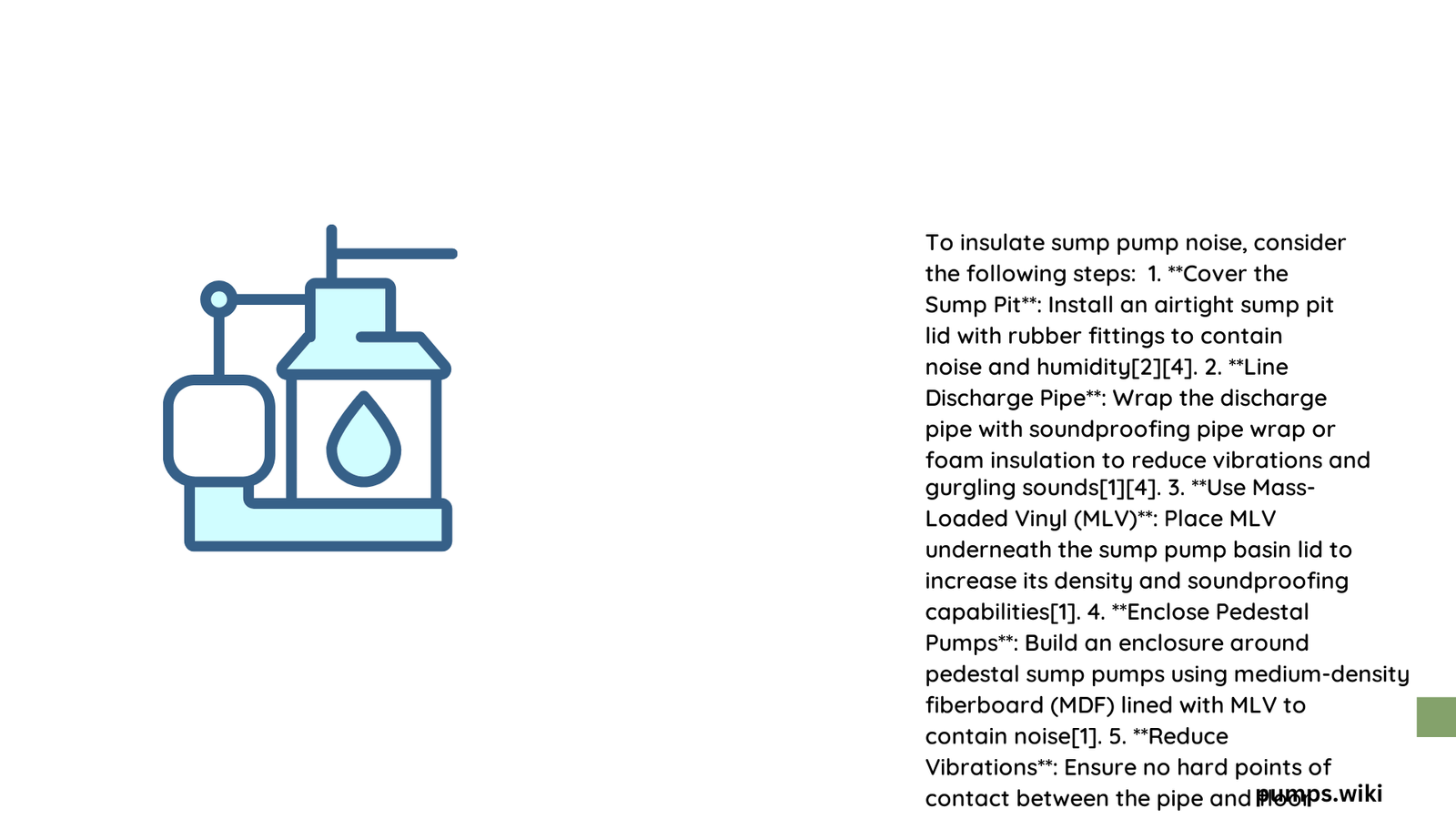Sump pump noise can be a significant disturbance in homes, causing disruption and annoyance. Homeowners often struggle with loud, vibrating pumps that create unwanted sound during water removal. This comprehensive guide explores advanced techniques to insulate sump pump noise, providing practical solutions that reduce sound transmission, minimize vibrations, and create a quieter basement environment through strategic material selection and installation methods.
Why Do Sump Pumps Create Noise?
Sump pumps generate noise through multiple mechanisms:
- Mechanical Vibrations: Motor and impeller movements
- Water Flow Turbulence: Rapid water discharge
- Structural Resonance: Direct contact with surrounding surfaces
What Materials Block Sump Pump Sound?
Acoustic Insulation Options
| Material | Noise Reduction Coefficient | Thickness | Cost Effectiveness |
|---|---|---|---|
| CFAB Cellulose Panels | 0.85 | 1.5″ | High |
| Neoprene Wrapping | 0.70 | 1/2″ | Medium |
| Fiberglass Insulation | 0.65 | 1″ | Low-Medium |
How to Implement Soundproofing Techniques?
Vibration Dampening Strategies
- Rubber Mat Installation
- Place thick rubber mats underneath sump pump
- Prevents direct contact with concrete or wooden surfaces
-
Absorbs mechanical vibrations effectively
-
Enclosure Construction
- Build custom soundproof box using CFAB cellulose panels
- Ensure proper ventilation
- Use closed-cell foam tape for sealing
What Are Noise Reduction Expectations?
Proper soundproofing techniques can reduce sump pump noise by:
- Initial Noise Level: 78-80 decibels
- After Soundproofing: 10-20 decibels
- Noise Reduction Percentage: 50-85%
How Much Does Soundproofing Cost?
Estimated Investment
- Materials: $1-$5 per square foot
- Labor: $50-$200 per hour
- Total Project Cost: $200-$1,000 depending on complexity
Pro Tips for Maximum Sound Reduction
- Use multiple layered insulation techniques
- Regularly maintain pump to prevent additional noise
- Consider professional installation for complex setups
Common Soundproofing Mistakes to Avoid
- Inadequate Sealing: Leaving gaps in enclosure
- Wrong Material Selection: Using non-acoustic materials
- Improper Mounting: Direct surface contact
Technical Considerations
Successful sump pump noise insulation requires understanding:
- Acoustic properties of materials
- Vibration transmission mechanisms
- Proper installation techniques
Maintenance and Long-Term Performance
Regular maintenance ensures continued noise reduction:
- Inspect insulation annually
- Check for material degradation
- Replace worn dampening components
Conclusion

Insulating sump pump noise is achievable through strategic material selection, precise installation, and understanding sound transmission principles. Homeowners can significantly reduce disruptive pump sounds by implementing comprehensive soundproofing techniques.
